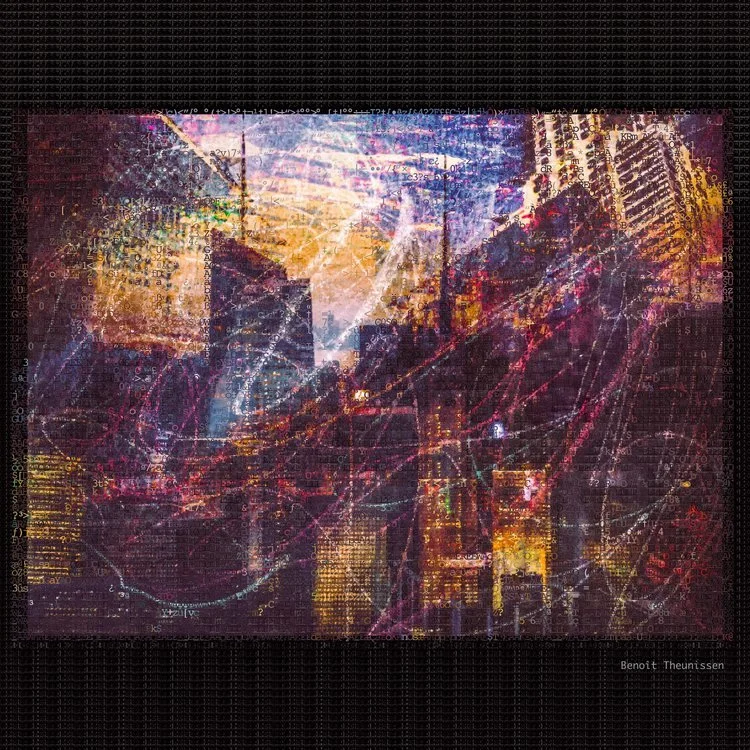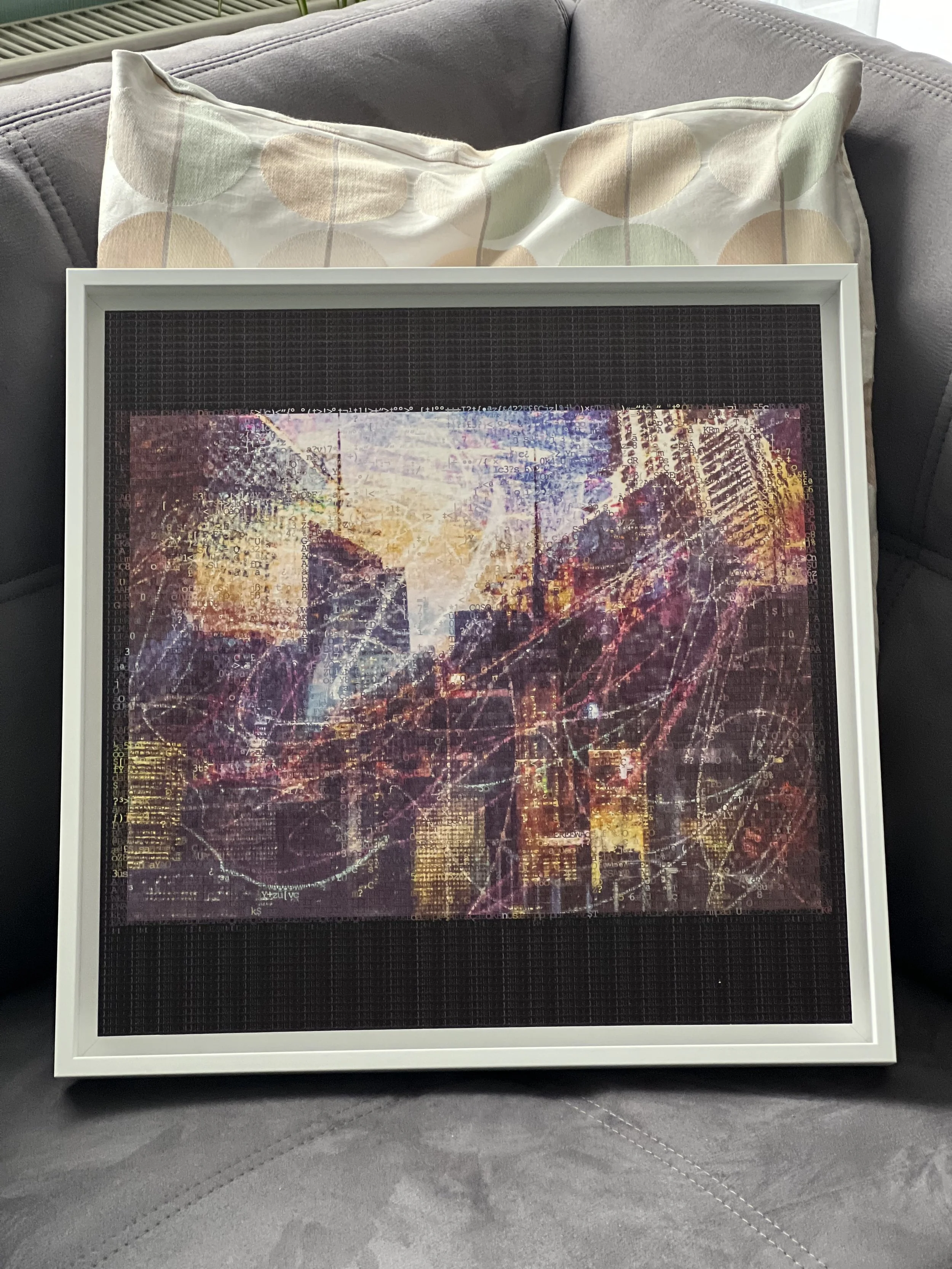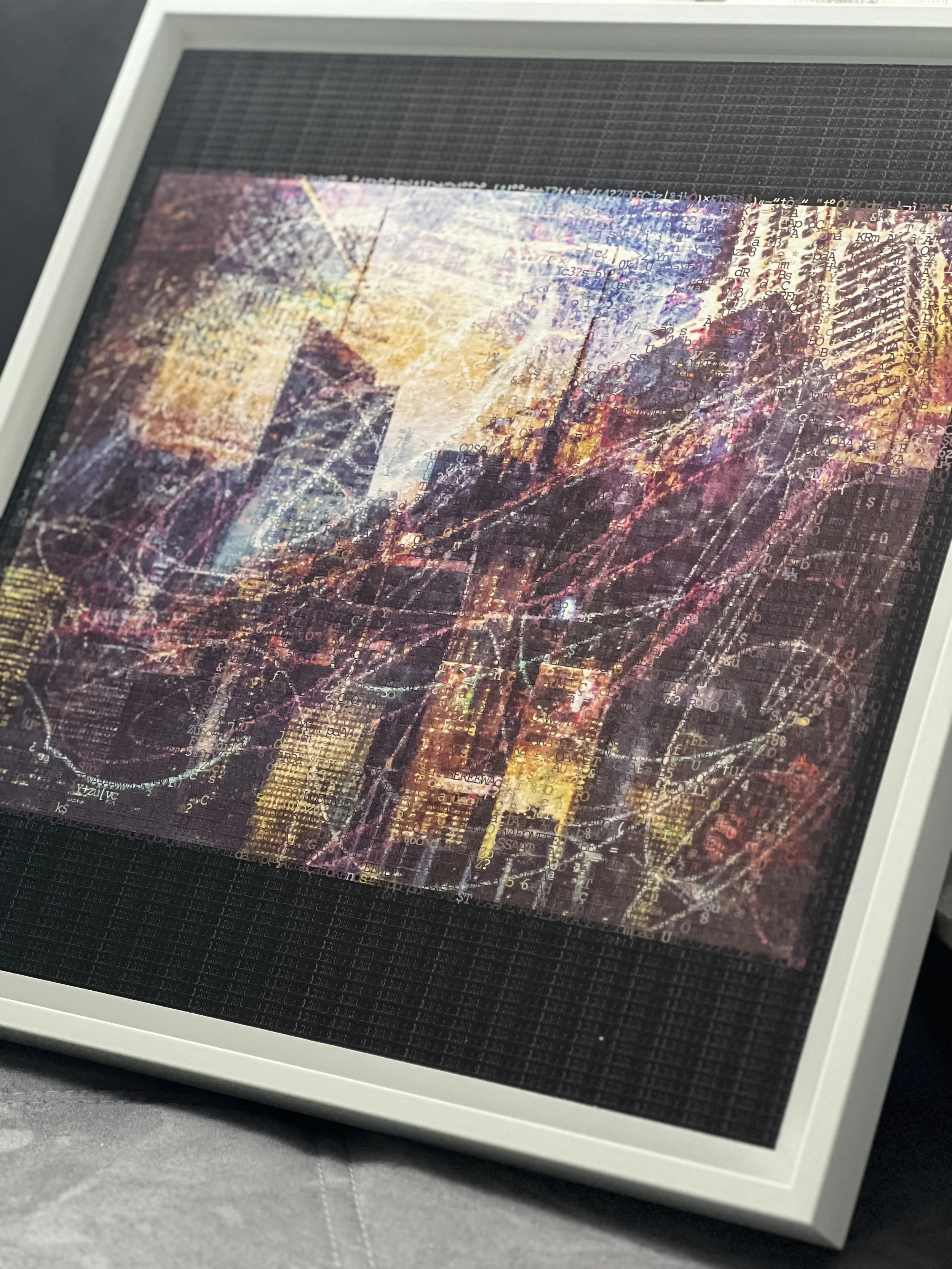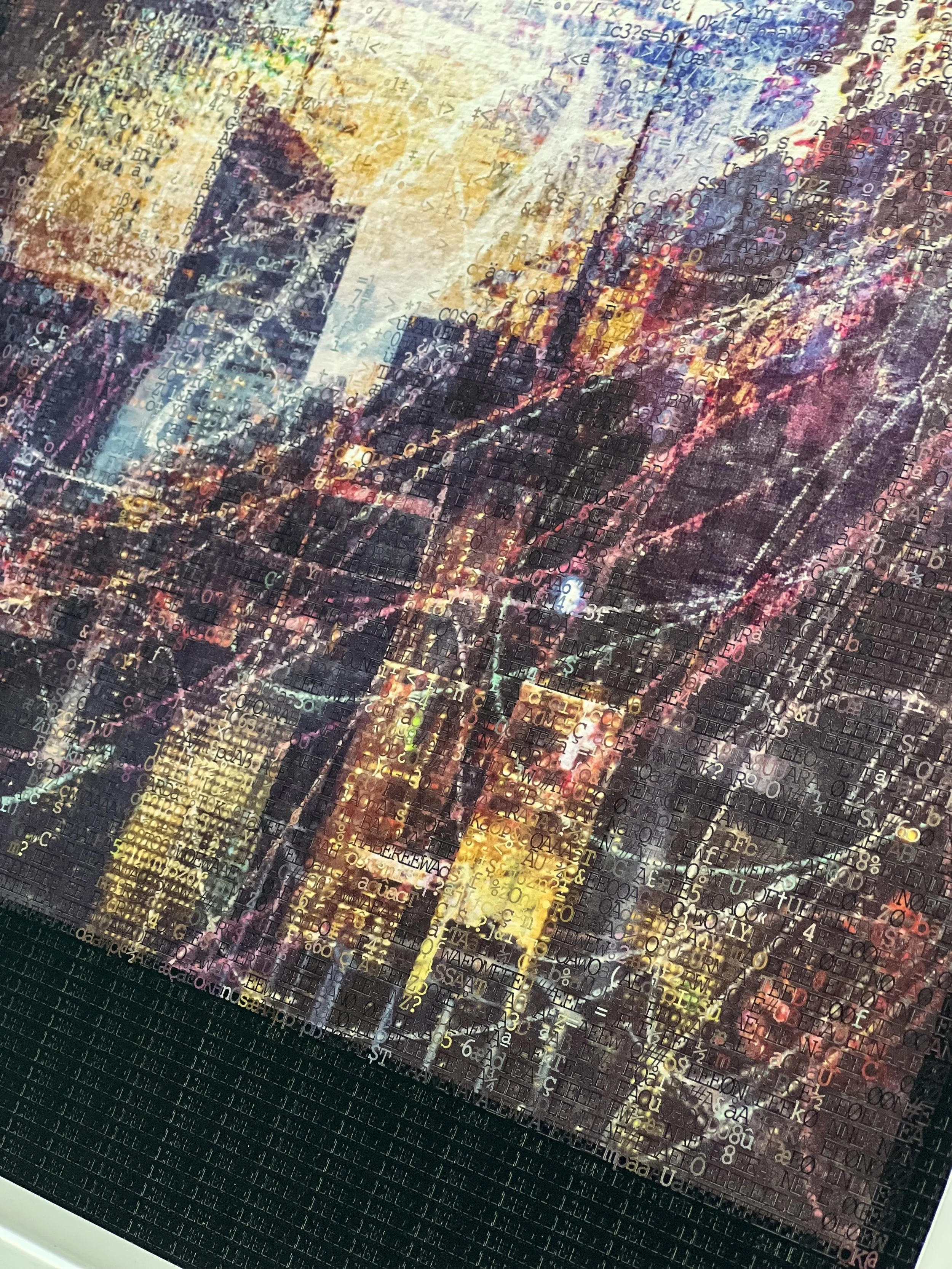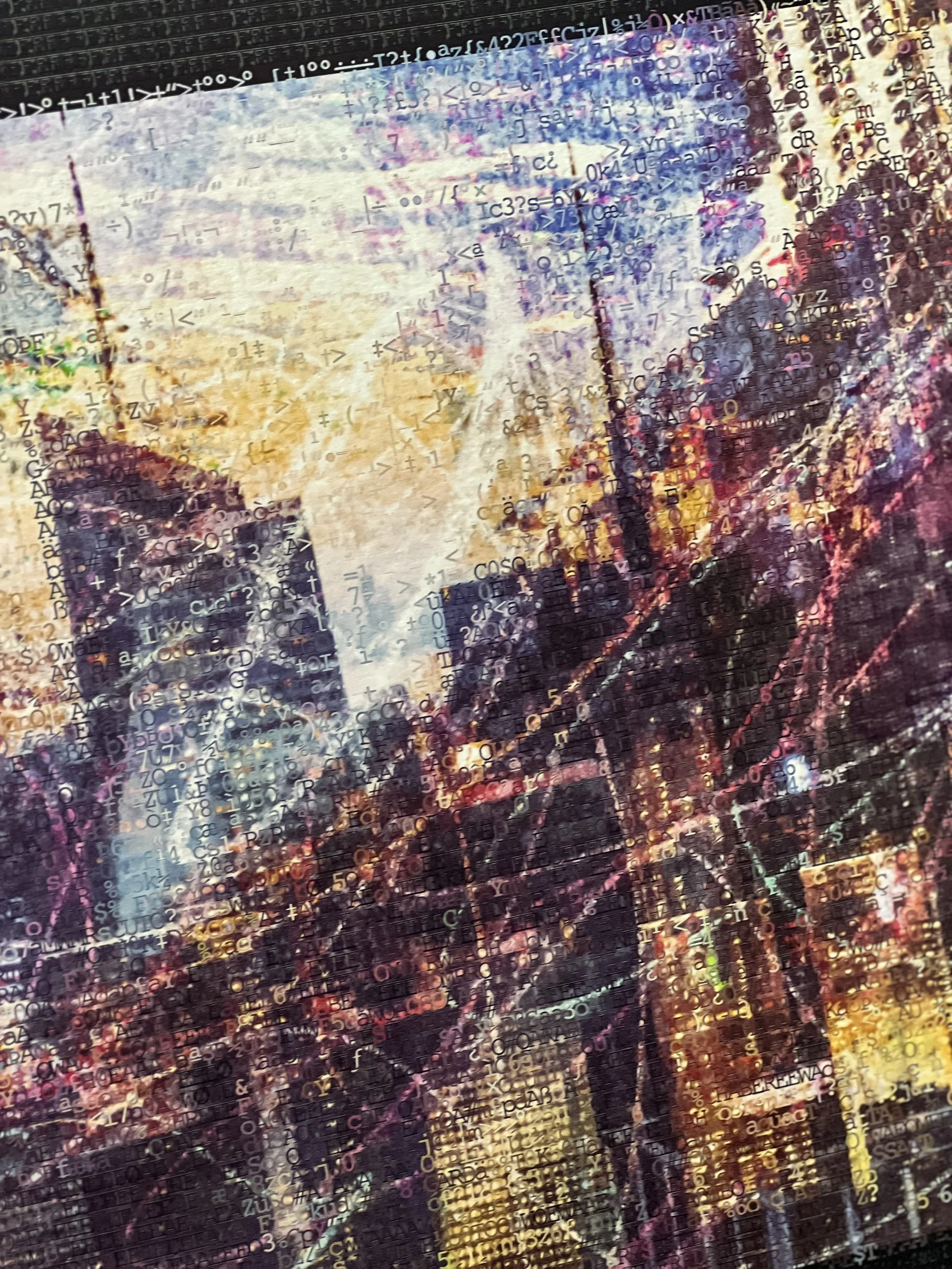The emotional journey of printing fine art photography
'Urban Mirage' from the 'City Stream' collection – a fine art print blending urban landscapes with surreal, abstract elements, meticulously printed on gallery-quality paper. Framed with care and precision, it highlights the importance of craftsmanship and attention to detail in fine art photography.
What does it feel like to print one of your own works? What emotions arise when you see your creation come to life, professionally printed on gallery-quality paper, meticulously tested and compared with other samples? And how does it feel when that print is not only mounted on a high-quality medium like 3mm aluminium Dibond but also framed in a way that elevates its presentation, such as with a floating frame?
These are questions I recently began asking myself. It was during an art photography coaching session with French photographer and artist Ludovic Baron that I was confronted with this reflection. As part of a challenge given to his students, we were tasked with producing a gallery-standard print of one of our favourite works within a month. This involved everything from testing various papers, ordering samples, selecting the ideal framing, and finding the perfect overall rendering. For my part, I had to wait over two weeks for my print to arrive from a renowned French laboratory that has been working with famous photographers for decades. The waiting, although long, only heightened the anticipation and the emotions I felt upon its arrival.
The fine art photography print ordered is titled 'Urban Mirage' from the 'City Stream' collection.
The ritual of unboxing
When the package finally arrived, it was not just another delivery. The unboxing became a ritual. I took my time, donned gloves to avoid leaving fingerprints on the 340g Hahnemühle paper mounted on 3mm aluminium Dibond. A mark on this kind of surface is unforgiving. The whole process demanded patience, care, and a deep respect for quality. Quality, I’ve come to realise, is something that is earned. Producing a gallery-quality print is a demanding and slow process, filled with meticulous attention to detail. Without this care, the emotional impact of the work can be completely lost.
A glimpse of the feeling of unboxing a fine art photography print.
Beyond the digital: the importance of physical prints
This experience made me realise that creating a digital work of art is only half of the process. Of course, there is a significant creative and technical effort behind each digital file, but bringing it into the physical realm adds an entirely new dimension. I had to learn about different types of papers, framing options, mounting techniques, and even anti-reflective glass—all factors that influence both the outcome and the price. These aren’t merely material concerns; they’re an integral part of the creative process. The choices regarding paper, format, and framing directly affect the emotional response of the viewer, whether they are the artist or the eventual owner.
The risk of losing impact
I’ve concluded that even a stunning digital artwork can lose its power if it’s poorly reproduced in physical form. Being a visual artist, a photographer, or even a digital creator requires a deep understanding of the printing and framing process. These elements are just as crucial as the creation of the artwork itself. The goal is to provoke an emotional reaction, whether it be positive, negative, or complex. And if the physical production of the work isn’t handled with the same care as its creation, the artist has failed in their mission to evoke that response.
Experiencing the process as a client
Receiving my first gallery-quality print allowed me to experience the process through the eyes of a customer. I encountered the frustration of delayed delivery, simulated estimates based on different formats and materials, and ultimately, I was able to feel the emotion not just as the artist, but as the potential buyer of the work. This exercise has been invaluable, and now, all that remains is finding the perfect wall that complements the colours, tones, and framing of the print.



